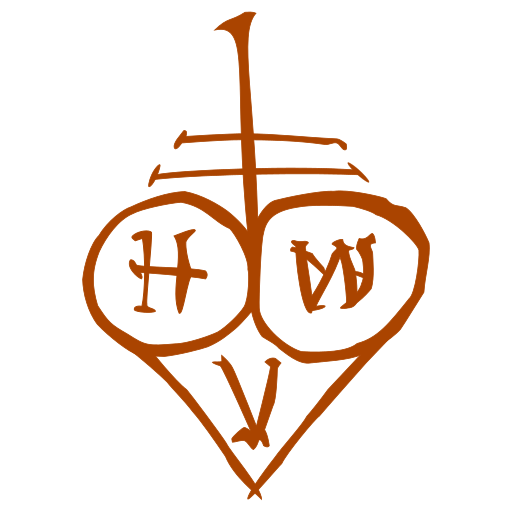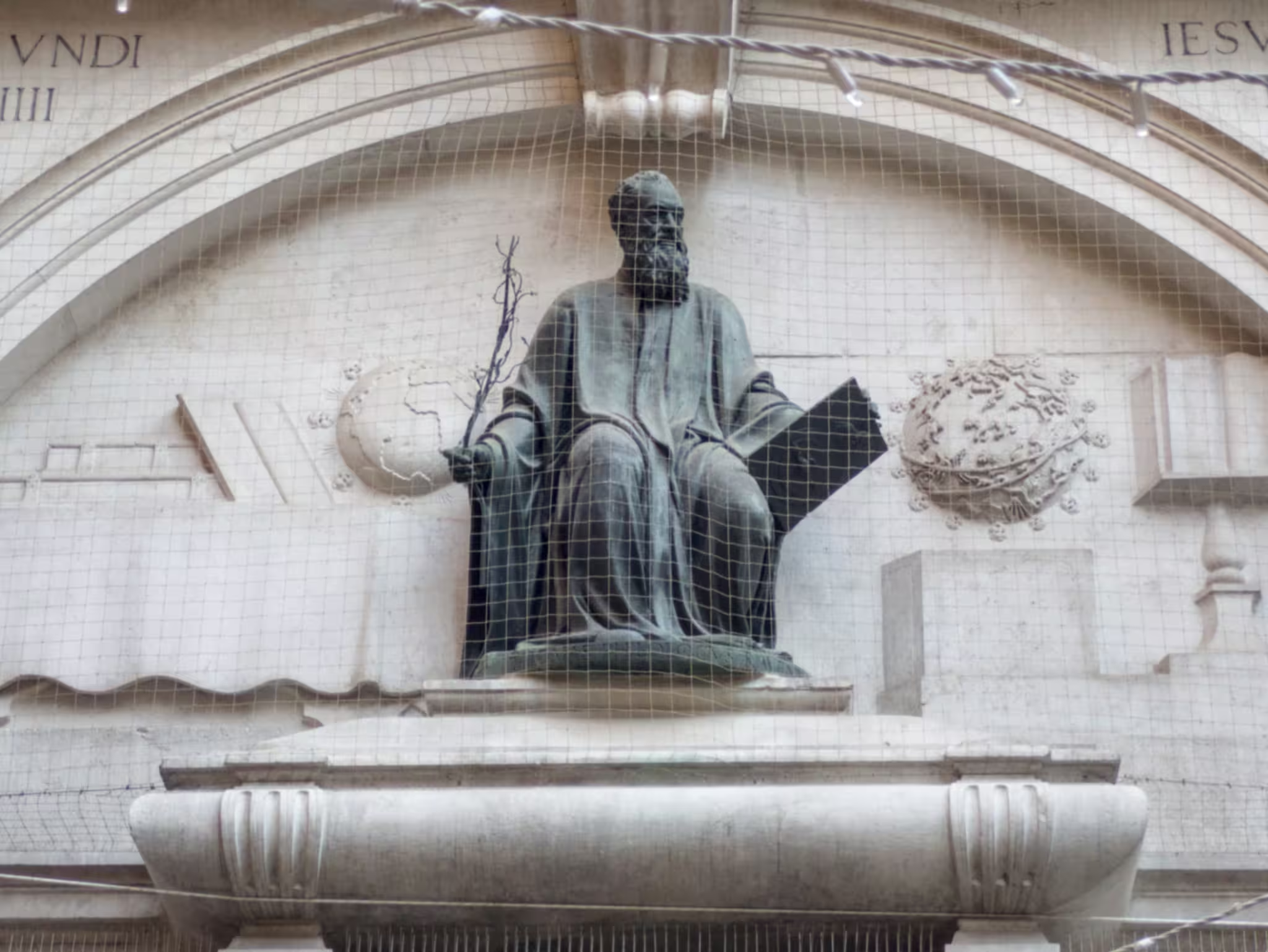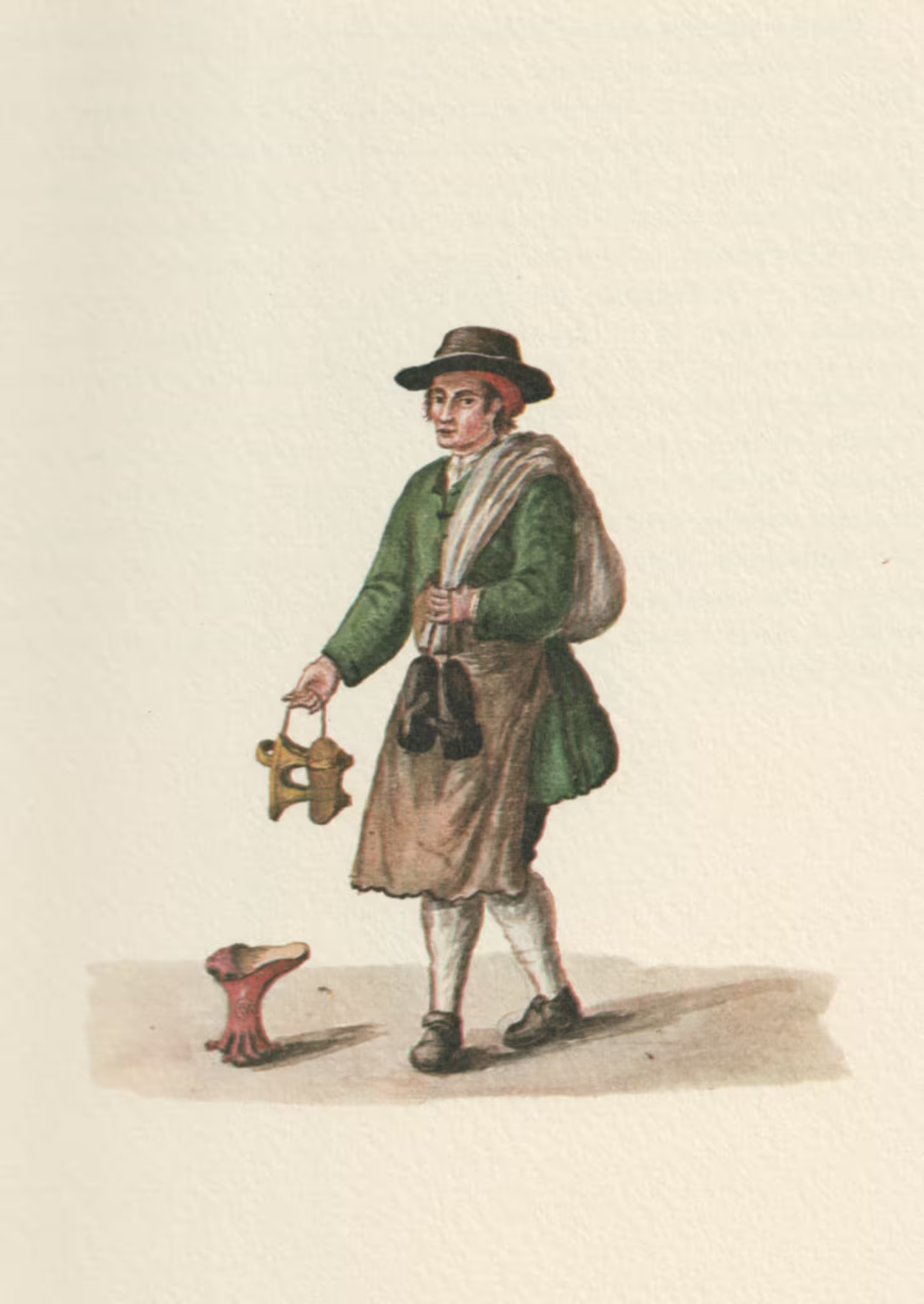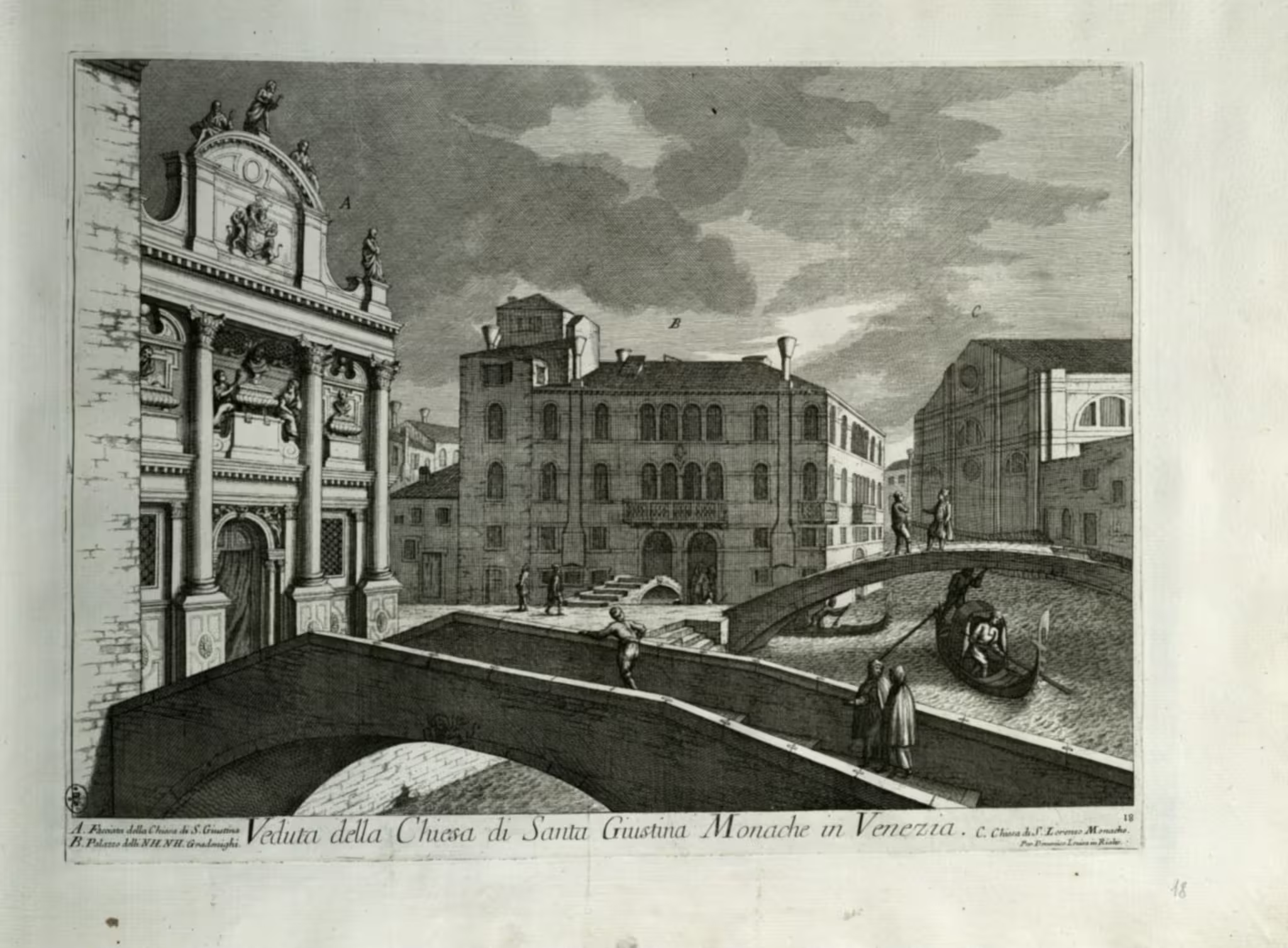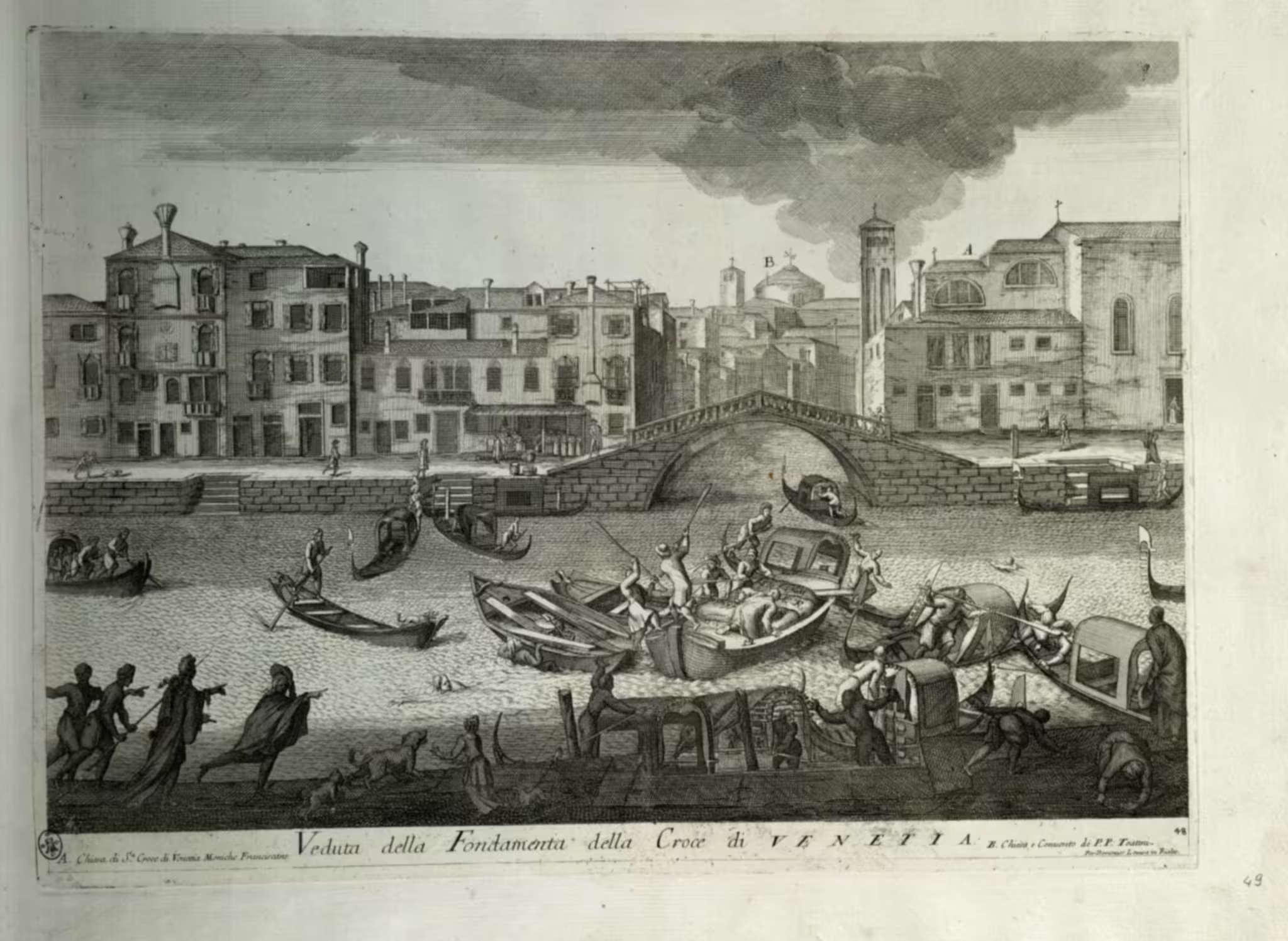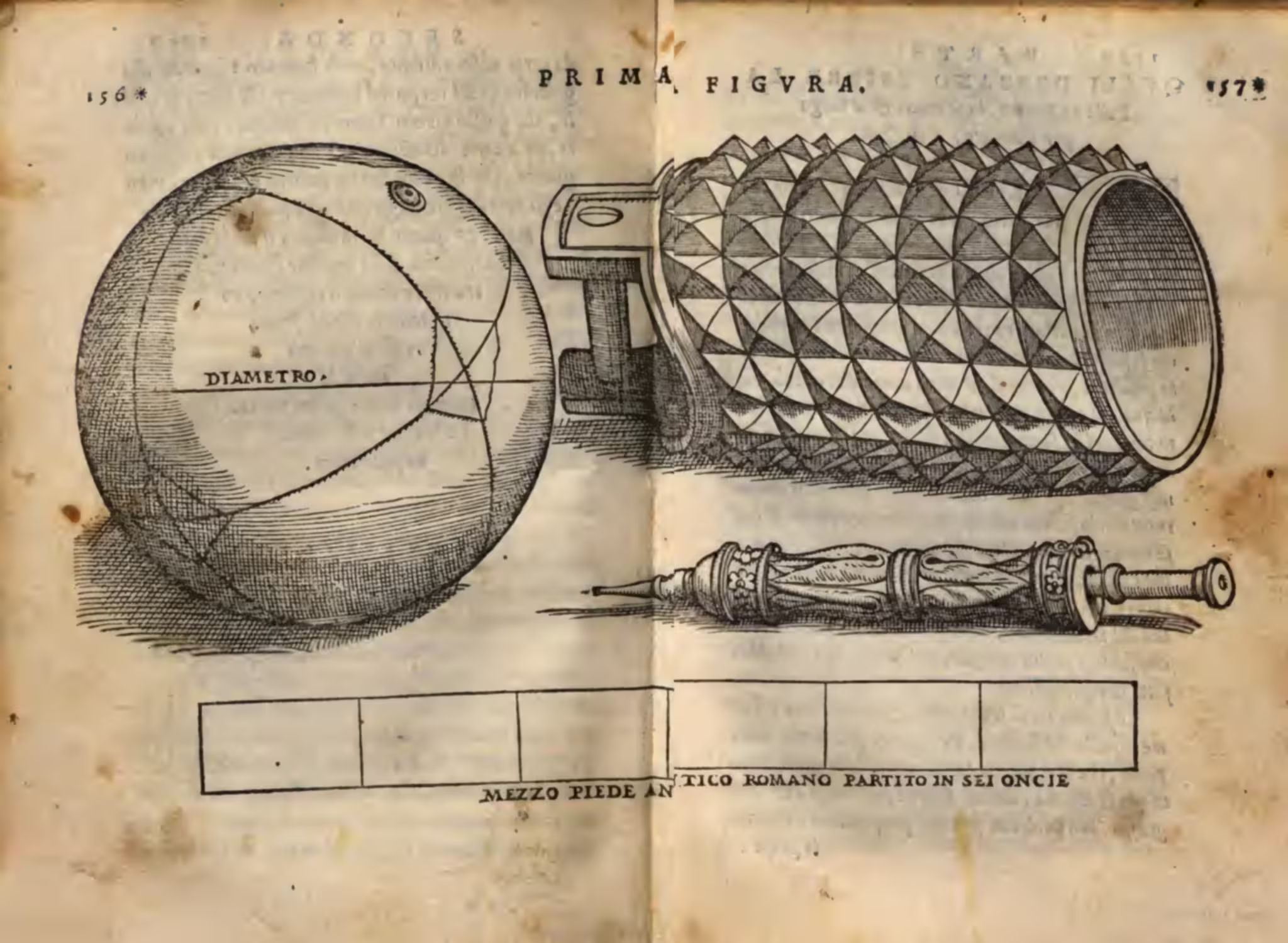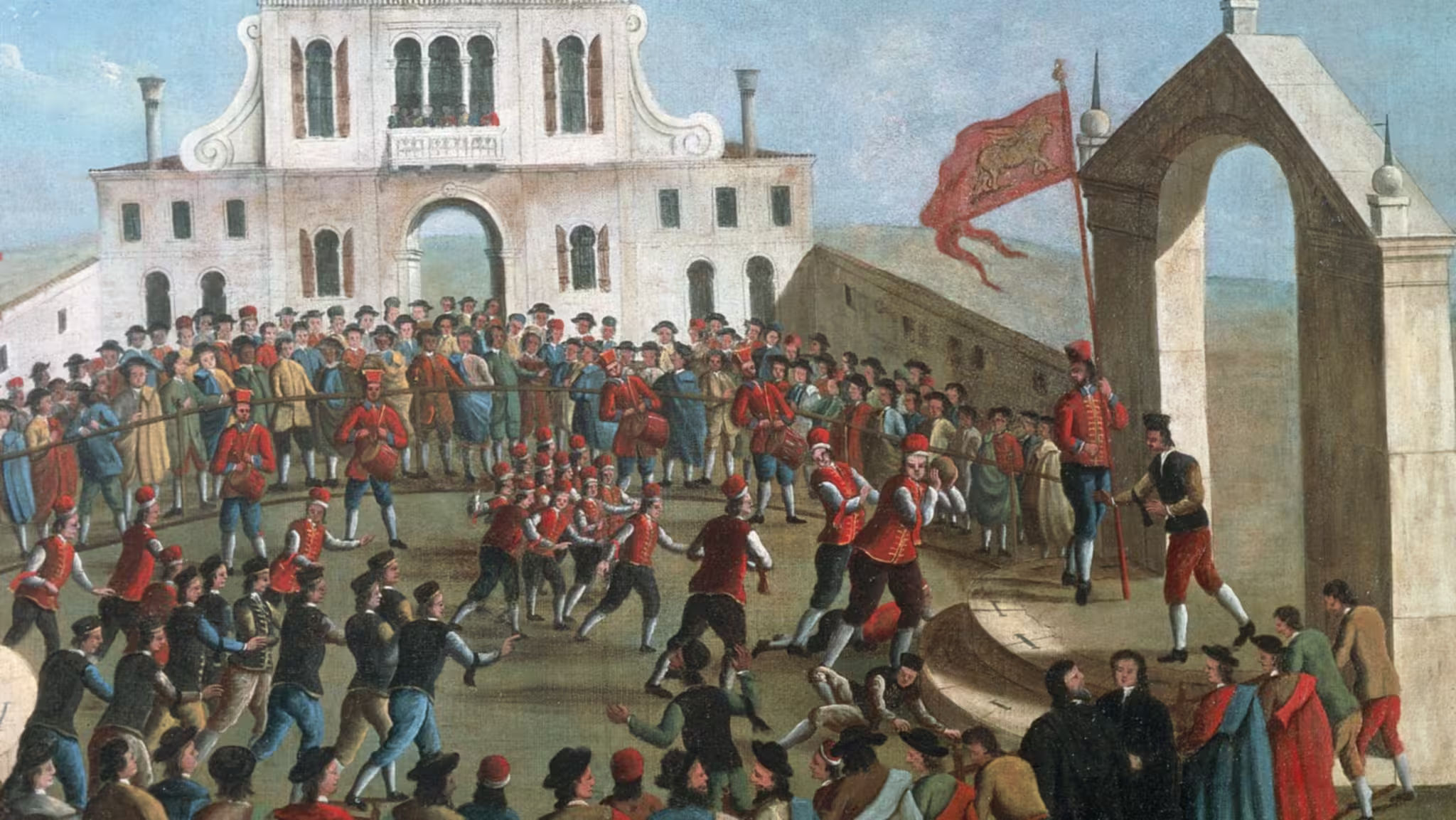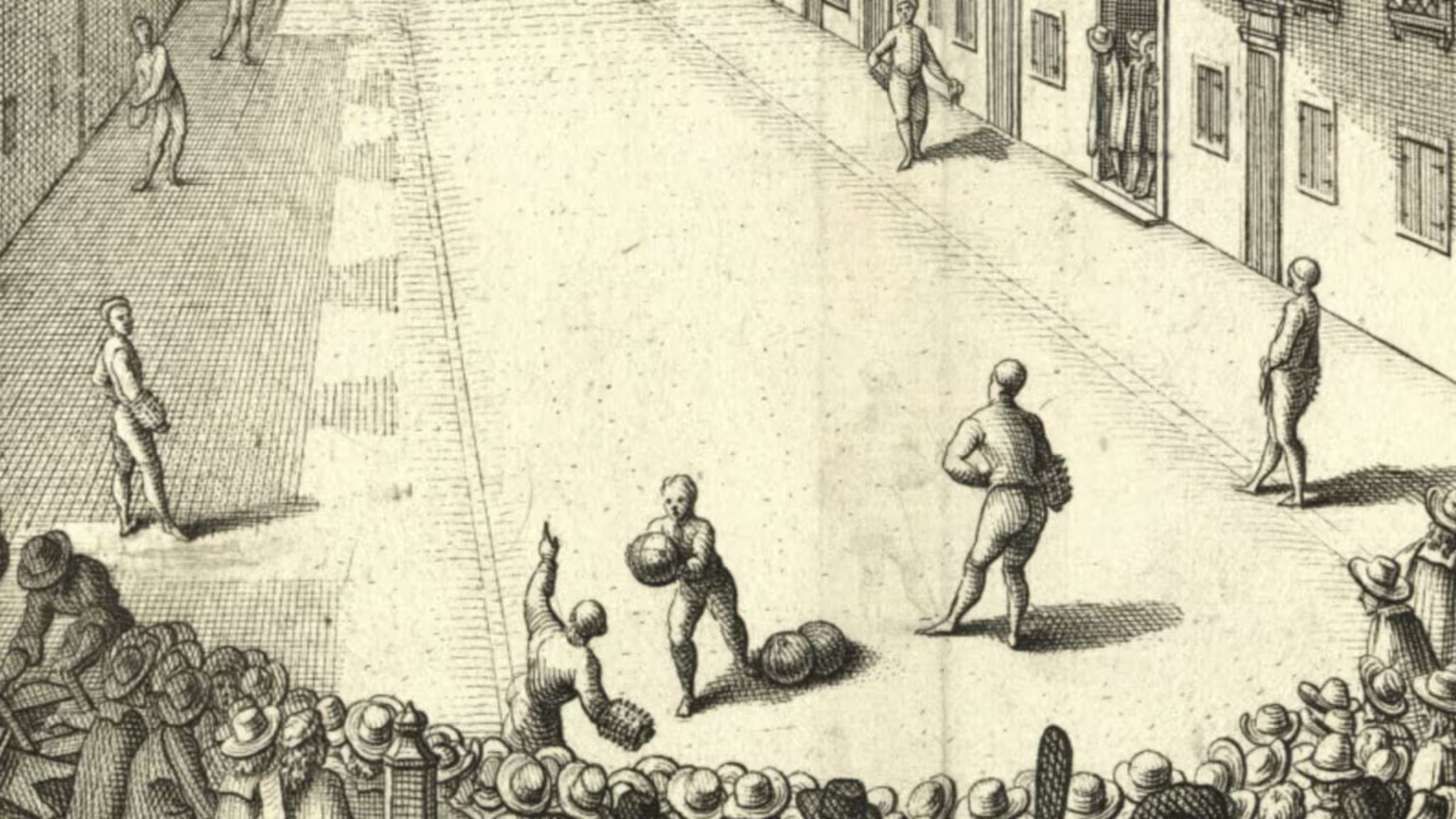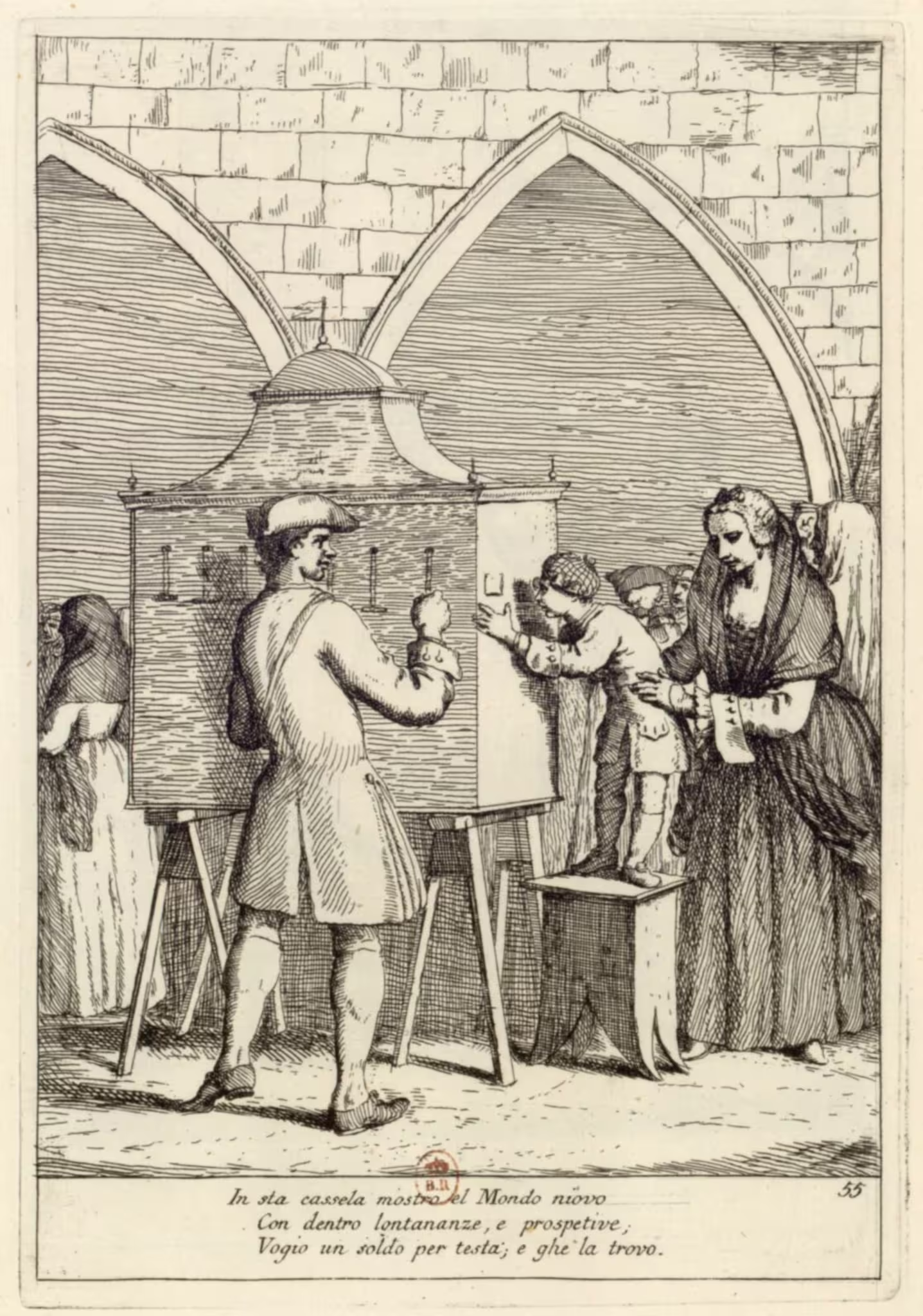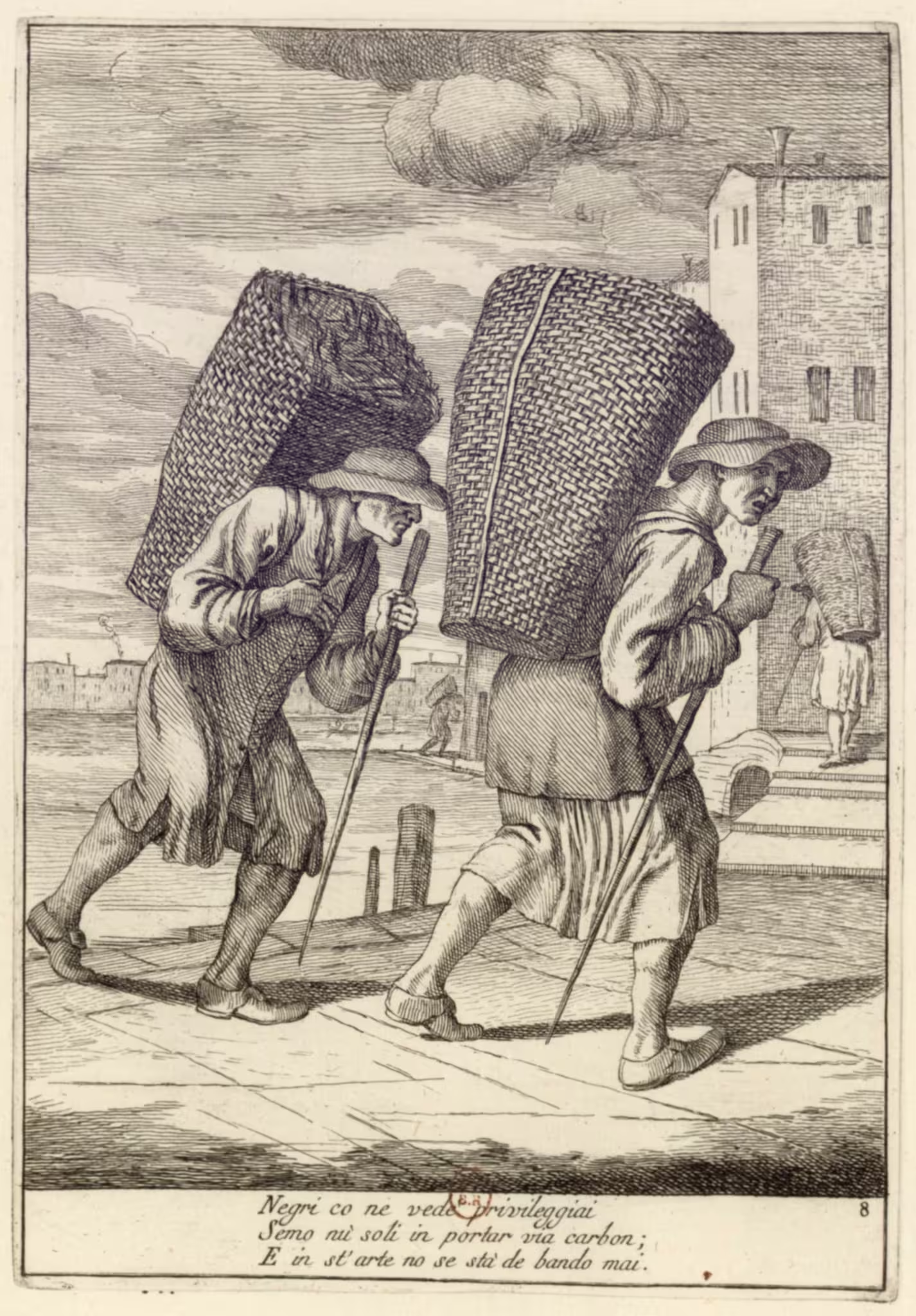Tassini 1863 Curiosità
-
Thomas Philologus Ravennas
The statue on the façade of the San Zulian church is not a saint, but an astrologer and doctor, who sold remedies for syphilis.
-
Arte Quadrupla — Quadruple Craft — Grevembroch 4-64
“Arte Quadrupla” (Quadruple Art) from the Gli abiti de veneziani (1754) by Giovanni Grevembroch, translated by René Seindal.
-
Veduta della Chiesa di S. Giustina — Il Gran Teatro di Venezia — plate 18
“Veduta della Chiesa di S. Giustina” from the “Gran Teatro di Venezia”, published by Domenico Lovisa, c. 1717.
-
Veduta della Fondamenta della Croce di Venetia — Il Gran Teatro di Venezia — plate 48
“Veduta della Fondamenta della Croce di Venetia” from the “Gran Teatro di Venezia”, published by Domenico Lovisa, c. 1717.
-
The game of Pallone
The “Game of Pallone” was the quintessential ball game in the Republic of Venice and elsewhere, but it wasn’t really like any modern game.
-
The game of Calcio
The Venetians played ball games of various kinds. The game of Calcio is the one sounds most modern, but it wasn’t exactly like it’s played today. Far from it, in fact.
-
Ball games in Venice
The Venetians of yore played ball games for fun and sports. Some of these ball games were similar to modern sports, even if not excessively
-
Jacopo Tiepolo — the 43rd doge of Venice
Jacopo TIepolo, doge 1229–1249, left an impact on Venice, which is still clearly visible today.
-
Mondo Novo — peep box operator — Zompini — Arti #55
“Mondo Novo” (peep box operator) from “Arti che vanno per via” (1785) by Gaetano Zompini, translated by René Seindal.
-
Carboneri — transporters and sellers of charcoal — Zompini — Arti #8
“Carboneri” (transporters and sellers of coal and charcoal) from “Arti che vanno per via” (1785) by Getano Zompini, translated by René Seindal.
